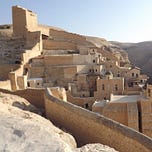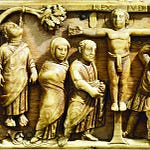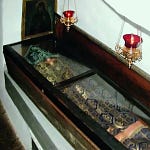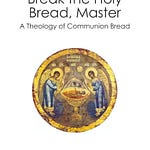This is an updated version of a talk originally given at the Western American Diocese Pastoral Conference in San Francisco, CA, 18 March 2014
CONTINUED FROM A PREVIOUS POST
THE SPIRIT OF THE TYPIKON
Many people seem to think that the Typikon forbids certain foods during Lent. They may, for example, assume that the Typikon forbids all animal products. This view is further advanced by clergy when they explain to parishioners the basics of fasting. As a shorthand, they may say that animal foods are not allowed during Lent, but all plant foods are allowed. This creates a kashrut-style approach to fasting, in which the fanciest vegan cakes and exquisite dark chocolates somehow become “lenten.” Pious Orthodox parishioners - much like pious Orthodox Jews - can be observed debating whether some ingredient is derived from an animal product and whether it is “kosher” - that is to say, lenten. And much like in kashrut, the focus shifts from the discipline of the body to the avoidance of certain ingredients for the sake of ritual purity. Fasting degrades into a religious vegan diet, in which some products become religiously unclean, while others are religiously clean.
This is not a new problem. At the end of the 19th century, a priest in Kornevsky County in the Russian Empire received a confession of a local woman. The woman confessed breaking the fast. When the priest asked what exactly she had eaten, the woman said that it was radishes grown from seeds which had been sprouted in milk.1 Just like observant Jews, some Orthodox faithful keep a separate set of dishes exclusively for lenten foods, lest there be ritual cross-contamination and impurity.
It must be noted here that vegan-diet approach to fasting may be the only reasonable way to greet a hierarch, should he visit a parish during Lent. Offering to His Eminence bread, pickles and water after sunset may not be the best strategy, especially if the guest is one’s ruling bishop. And sisterhoods work very hard to express their love for their archpastors in whatever ways they can, including culinary ways. This is perfectly normal, and these are reasonable exceptions.
Yet we all understand that the Typikon breathes very different air, an entirely different spirit - not a spirit of slavery to the laws and rules of kashrut, but a spirit of freedom from the desires of the flesh. Reading the Typikon, one very important thing can be observed: the Typicon rarely contains any prohibition on any food. There are certainly some -such as the remark about a monk “ruining” his Lent with fish is an indirect prohibition of fish. But mostly, this is not the language of the Typikon.
Listen to this episode with a 7-day free trial
Subscribe to Phroneo to listen to this post and get 7 days of free access to the full post archives.











